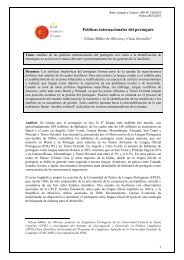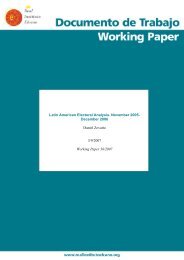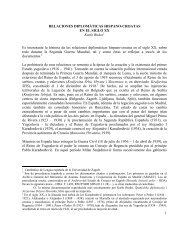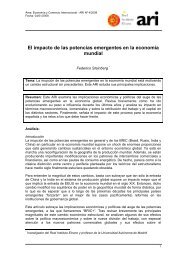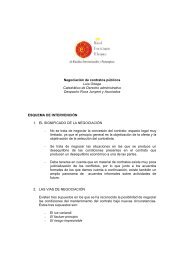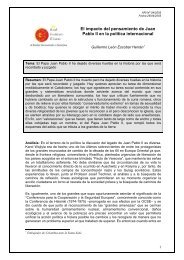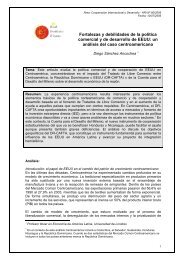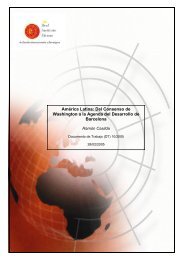Spain and the United States - Real Instituto Elcano
Spain and the United States - Real Instituto Elcano
Spain and the United States - Real Instituto Elcano
Create successful ePaper yourself
Turn your PDF publications into a flip-book with our unique Google optimized e-Paper software.
126<br />
SPAIN AND THE UNITED STATES<br />
Exhibit 7.1 <strong>Real</strong> GDP Growth in <strong>Spain</strong>, <strong>the</strong> EU-25 <strong>and</strong> <strong>the</strong> <strong>United</strong> <strong>States</strong>,<br />
1996-2006<br />
GDP growth between 1996 <strong>and</strong> 2004 averaged 3.5%, slightly above that of <strong>the</strong><br />
US economy <strong>and</strong> compared with 2.2% for <strong>the</strong> EU-25 (see Exhibit 7.1).<br />
The boom is fuelled by buoyant private consumption, particularly a<br />
dynamic construction sector. Employment has risen strongly: 400,000 new<br />
jobs in 2004, one-third of all new jobs in <strong>the</strong> Euro zone. As a result of <strong>the</strong> huge<br />
influx of immigrants (who are doing <strong>the</strong> jobs that Spaniards are no longer<br />
willing to do), <strong>the</strong> National Statistics Office had to revise <strong>Spain</strong>’s 2004 gross<br />
domestic product figure upwards by almost 40 billion to 837.5 billion.<br />
Household wealth (<strong>and</strong> indebtedness) has also risen significantly, largely<br />
linked to <strong>the</strong> surge in real estate values (145% between 1997 <strong>and</strong> 2005, only<br />
surpassed by South Africa, Irel<strong>and</strong> <strong>and</strong> Britain). 2<br />
However, <strong>the</strong>re are several structural shortcomings, most notably a steady<br />
decline in competitiveness, which is manifested in all international surveys.<br />
<strong>Spain</strong> slipped from 31 st to 38 th position out of 60 nations in <strong>the</strong> 2005<br />
competitiveness ranking of <strong>the</strong> IMD, just ahead of India <strong>and</strong> behind Hungary.<br />
Since 2001, <strong>Spain</strong> has fallen 14 places. The country declined in all four of <strong>the</strong><br />
competitiveness factors, particularly in government <strong>and</strong> business efficiency<br />
(see Exhibit 7.2). Externally, Spanish products are facing growing difficulties<br />
in maintaining <strong>the</strong>ir market share. <strong>Spain</strong>’s share of exports in foreign markets,<br />
which have held steady since <strong>the</strong> launch of <strong>the</strong> euro in 2002, tended to decline<br />
in 2004, even in <strong>the</strong> European market.<br />
The current account deficit in 2004 (with no signs of a change of trend in<br />
2005) was a record 40 billion (5% of GDP) because of low export growth,<br />
ballooning imports <strong>and</strong> a tourism sector, <strong>the</strong> economy’s mainstay, which is<br />
beginning to suffer from more competitive prices in o<strong>the</strong>r countries. External,<br />
as opposed to domestic, dem<strong>and</strong> is making an increasingly negative<br />
contribution to GDP growth.<br />
2. See “In Come <strong>the</strong> Waves” (The Economist, June 18, 2005).



